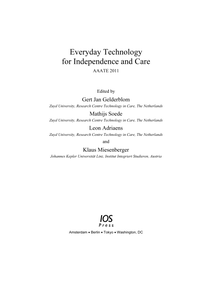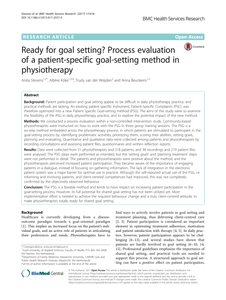Background: Collar-related pressure ulcers (CRPU) are a problem in trauma patients with a suspicion of cervical cord injury patients. Indentation marks (IM), skin temperature (Tsk) and comfort could play a role in the development of CRPU. Two comparable cervical collars are the Stifneck® and Philadelphia®. However, the differences between them remain unclear. Aim: To determine and compare occurrence and severity of IM, Tsk and comfort of the Stifneck® and Philadelphia® in immobilized healthy adults. Methods: This single-blinded randomized controlled trial compared two groups of immobilized participants in supine position for 20 min. Results: All participants (n = 60) generated IM in at least one location in the observed area. Total occurrence was higher in the Stifneck®-group (n = 95 versus n = 69; p = .002). Tsk increased significantly with 1.0 °C in the Stifneck®-group and 1.3 °C in the Philadelphia®-group (p = .024). Comfort was rated 3 on a scale of 5 (p = .506). Conclusion: The occurrence of IM in both groups was high. In comparison to the Stifneck®, fewer and less severe IM were observed from the Philadelphia®. The Tsk increased significantly with both collars; however, no clinical difference in increase of Tsk between them was found. The results emphasize the need for a better design of cervical collars regarding CRPU.
LINK
The objective of this study is to investigate the heart rate (HR) accuracy measured at the wrist with the photoplethysmography (PPG) technique with a Fitbit Charge 2 (Fitbit Inc) in wheelchair users with spinal cord injury, how the activity intensity affects the HR accuracy, and whether this HR accuracy is affected by lesion level.
MULTIFILE

In wheelchair rugby (WR) athletes with tetraplegia, wheelchair performance may be impaired due to (partial) loss of innervation of upper extremity and trunk muscles, and low blood pressure (BP). The objective was to assess the effects of electrical stimulation (ES)-induced co-contraction of trunk muscles on trunk stability, arm force/power, BP, and WR performance.
DOCUMENT

Of all patients in a hospital environment, trauma patients may be particularly at risk for developing (device-related) pressure ulcers (PUs), because of their traumatic injuries, immobility, and exposure to immobilizing and medical devices. Studies on device-related PUs are scarce. With this study, the incidence and characteristics of PUs and the proportion of PUs that are related to devices in adult trauma patients with suspected spinal injury were described. From January–December 2013, 254 trauma patients were visited every 2 days for skin assessment. The overall incidence of PUs was 28⋅3% (n = 72/254 patients). The incidence of device-related PUs was 20⋅1% (n = 51), and 13% (n = 33) developed solely device-related PUs. We observed 145 PUs in total of which 60⋅7% were related to devices (88/145). Device-related PUs were detected 16 different locations on the front and back of the body. These results show that the incidence of PUs and the proportion of device-related PUs is very high in trauma patients
DOCUMENT

Background: A new selective preventive spinal immobilization (PSI) protocol was introduced in the Netherlands. This may have led to an increase in non-immobilized spinal fractures (NISFs) and consequently adverse patient outcomes. Aim: A pilot study was conducted to describe the adverse patient outcomes in NISF of the PSI protocol change and assess the feasibility of a larger effect study. Methods: Retrospective comparative cohort pilot study including records of trauma patients with a presumed spinal injury who were presented at the emergency department of a level 2 trauma center by the emergency medical service (EMS). The pre-period 2013-2014 (strict PSI protocol), was compared to the post-period 2017-2018 (selective PSI protocol). Primary outcomes were the percentage of records with a NISF who had an adverse patient outcome such as neurological injuries and mortality before and after the protocol change. Secondary outcomes were the sample size calculation for a larger study and the feasibility of data collection. Results: 1,147 records were included; 442 pre-period, and 705 post-period. The NISF-prevalence was 10% (95% CI 7-16, n = 19) and 8% (95% CI 6-11, n = 33), respectively. In both periods, no neurological injuries or mortality due to NISF were found, by which calculating a sample size is impossible. Data collection showed to be feasible. Conclusions: No neurological injuries or mortality due to NISF were found in a strict and a selective PSI protocol. Therefore, a larger study is discouraged. Future studies should focus on which patients really profit from PSI and which patients do not.
DOCUMENT

Background: Impaired upper extremity function due to muscle paresis or paralysis has a major impact on independent living and quality of life (QoL). Assistive technology (AT) for upper extremity function (i.e. dynamic arm supports and robotic arms) can increase a client’s independence. Previous studies revealed that clients often use AT not to their full potential, due to suboptimal provision of these devices in usual care. Objective: To optimize the process of providing AT for impaired upper extremity function and to evaluate its (cost-)effectiveness compared with care as usual. Methods: Development of a protocol to guide the AT provision process in an optimized way according to generic Dutch guidelines; a quasi-experimental study with non-randomized, consecutive inclusion of a control group (n = 48) receiving care as usual and of an intervention group (optimized provision process) (n = 48); and a cost-effectiveness and cost-utility analysis from societal perspective will be performed. The primary outcome is clients’ satisfaction with the AT and related services, measured with the Quebec User Evaluation of Satisfaction with AT (Dutch version; D-QUEST). Secondary outcomes comprise complaints of the upper extremity, restrictions in activities, QoL, medical consumption and societal cost. Measurements are taken at baseline and at 3, 6 and 9 months follow-up.
DOCUMENT

Transitions in health care and the increasing pace at which technological innovations emerge, have led to new professional approach at the crossroads of health care and technology. In order to adequately deal with these transition processes and challenges before future professionals access the labour market, Fontys University of Applied Sciences is in a transition to combining education with interdisciplinary practice-based research. Fontys UAS is launching a new centre of expertise in Health Care and Technology, which is a new approach compared to existing educational structures. The new centre is presented as an example of how new initiatives in the field of education and research at the intersection of care and technology can be shaped.
DOCUMENT

Background Psychological aspects of labor and birth have received little attention within maternity care service planning or clinical practice. The aim of this paper is to propose a model demonstrating how neurohormonal processes, in particular oxytocinergic mechanisms, not only control the physiological aspects of labor and birth, but also contribute to the subjective psychological experiences of birth. In addition, sensory information from the uterus as well as the external environment might influence these neurohormonal processes thereby influencing the progress of labor and the experience of birth. Methodology In this new model of childbirth, we integrated the findings from two previous systematic reviews, one on maternal plasma levels of oxytocin during physiological childbirth and one meta-synthesis of women´s subjective experiences of physiological childbirth. Findings The neurobiological processes induced by the release of endogenous oxytocin during birth influence maternal behaviour and feelings in connection with birth in order to facilitate birth. The psychological experiences during birth may promote an optimal transition to motherhood. The spontaneous altered state of consciousness, that some women experience, may well be a hallmark of physiological childbirth in humans. The data also highlights the crucial role of one-to-one support during labor and birth. The physiological importance of social support to reduce labor stress and pain necessitates a reconsideration of many aspects of modern maternity care. Conclusion By listening to women’s experiences and by observing women during childbirth, factors that contribute to an optimized process of labor, such as the mothers’ wellbeing and feelings of safety, may be identified. These observations support the integrative role of endogenous oxytocin in coordinating the neuroendocrine, psychological and physiological aspects of labor and birth, including oxytocin mediated. decrease of pain, fear and stress, support the need for midwifery one-to-one support in labour as well as the need for maternity care that optimizes the function of these neuroendocrine processes even when birth interventions are used. Women and their partners would benefit from understanding the crucial role that endogenous oxytocin plays in the psychological and neuroendocrinological process of labor.
DOCUMENT

Background: Patient participation and goal setting appear to be difficult in daily physiotherapy practice, and practical methods are lacking. An existing patient-specific instrument, Patient-Specific Complaints (PSC), was therefore optimized into a new Patient Specific Goal-setting method (PSG). The aims of this study were to examine the feasibility of the PSG in daily physiotherapy practice, and to explore the potential impact of the new method. Methods: We conducted a process evaluation within a non-controlled intervention study. Community-based physiotherapists were instructed on how to work with the PSG in three group training sessions. The PSG is a six-step method embedded across the physiotherapy process, in which patients are stimulated to participate in the goal-setting process by: identifying problematic activities, prioritizing them, scoring their abilities, setting goals, planning and evaluating. Quantitative and qualitative data were collected among patients and physiotherapists by recording consultations and assessing patient files, questionnaires and written reflection reports. Results: Data were collected from 51 physiotherapists and 218 patients, and 38 recordings and 219 patient files were analysed. The PSG steps were performed as intended, but the ‘setting goals’ and ‘planning treatment’ steps were not performed in detail. The patients and physiotherapists were positive about the method, and the physiotherapists perceived increased patient participation. They became aware of the importance of engaging patients in a dialogue, instead of focusing on gathering information. The lack of integration in the electronic patient system was a major barrier for optimal use in practice. Although the self-reported actual use of the PSG, i.e. informing and involving patients, and client-centred competences had improved, this was not completely confirmed by the objectively observed behaviour. Conclusion: The PSG is a feasible method and tends to have impact on increasing patient participation in the goal-setting process. However, its full potential for shared goal setting has not been utilized yet. More implementation effort is needed to achieve the required behaviour change and a truly client-centred attitude, to make physiotherapists totally ready for shared goal setting.
DOCUMENT

From PLoS website: In general, dietary antigens are tolerated by the gut associated immune system. Impairment of this so-called oral tolerance is a serious health risk. We have previously shown that activation of the ligand-dependent transcription factor aryl hydrocarbon receptor (AhR) by the environmental pollutant 2,3,7,8-tetrachlorodibenzo-p-dioxin (TCDD) affects both oral tolerance and food allergy. In this study, we determine whether a common plant-derived, dietary AhR-ligand modulates oral tolerance as well. We therefore fed mice with indole-3-carbinole (I3C), an AhR ligand that is abundant in cruciferous plants. We show that several I3C metabolites were detectable in the serum after feeding, including the high-affinity ligand 3,3´-diindolylmethane (DIM). I3C feeding robustly induced the AhR-target gene CYP4501A1 in the intestine; I3C feeding also induced the aldh1 gene, whose product catalyzes the formation of retinoic acid (RA), an inducer of regulatory T cells. We then measured parameters indicating oral tolerance and severity of peanut-induced food allergy. In contrast to the tolerance-breaking effect of TCDD, feeding mice with chow containing 2 g/kg I3C lowered the serum anti-ovalbumin IgG1 response in an experimental oral tolerance protocol. Moreover, I3C feeding attenuated symptoms of peanut allergy. In conclusion, the dietary compound I3C can positively influence a vital immune function of the gut.
MULTIFILE